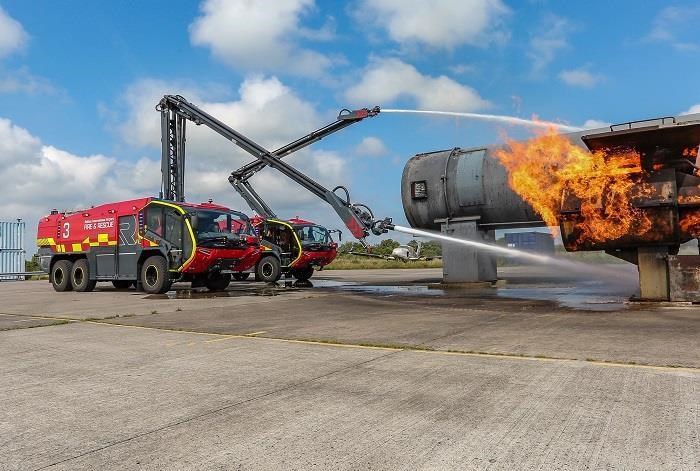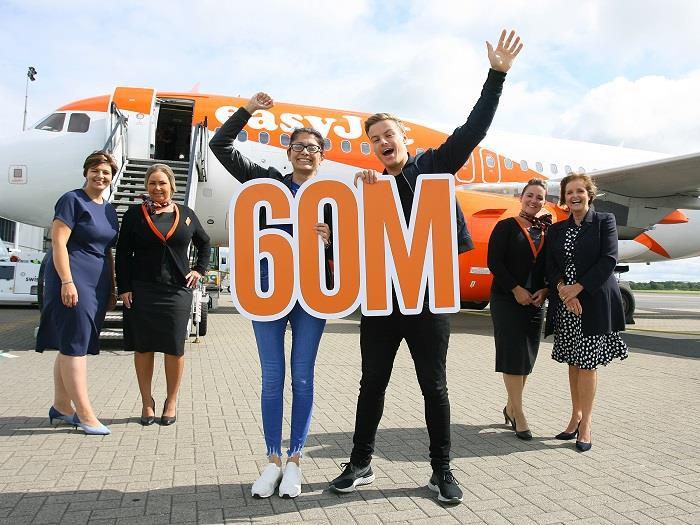
Two new, ultra-modern fire engines purchased by Belfast International Airport usher in a new era in fire-fighting in Northern Ireland. They are the Rosenbauer Panther High Reach Extending Turret (HRET) vehicles which have just entered service at a cost of £2 million.
The Austrian-made turbo charged engines are bristling with new fire-fighting features. These 12-metre long giants are powered by six-cylinder, Volvo engines and weigh in at a staggering 39 tonnes.
Driven through a six-speed, automatic gearbox, the Panthers combine speed with functionality. Their 700 horse-power engines can deliver a top speed of 75 MPH and accommodate up to six fire fighters and breathing apparatus.
The vehicles have rear-steer technology, which is a major advance for airport firefighters operating in the close confines of aprons and taxiways, and carry 11,000 litres of water along with 1,300 litres of foam concentrate. The vehicle pump can produce up to 9,000 litres per minute.
The High Reach Extending Turret (HRET) has a working height of 16.5 metres and a horizontal reach of 11.4 m. The turret has a throw or reach of 90 metres.
All sixty-seven firefighters undertook comprehensive training and formal assessment before the vehicles entered service.
Station Commander Stephen Goudy says the Panthers can reduce the risks to fire fighters who are involved in dealing with aviation fire-fighting.
Commander Goudy said: “The Panthers are also equipped with what’s known as a Stinger device which is capable of piercing an aircraft fuselage to extinguish or control an internal fire without the need to initially deploy fire fighters.
“These two vehicles are the most modern available and are a first for any Northern Ireland airport. We can also deploy the ‘Panthers’ in support of the Northern Ireland Fire and Rescue Service (NIFRS) where there is a requirement for this equipment and our specialist knowledge.”
Chief Fire Officer Mark Bothwell says We have a rolling programme of investment in our firefightersand new equipment, but this is certainly one of the most significant in recent years. These fire appliances deliver a state-of-the-art fire-fighting capability which provides our Fire and Rescue Service with some clear advantages and will form the backbone of our fire-fighting capability for the next decade.”
The investment also covers a Motor Transport Department involving comprehensive training for the team at Rosenbauer headquarters in Austria and on site to keep the vehicles running 24/7.
 Special Assistance
Special Assistance

